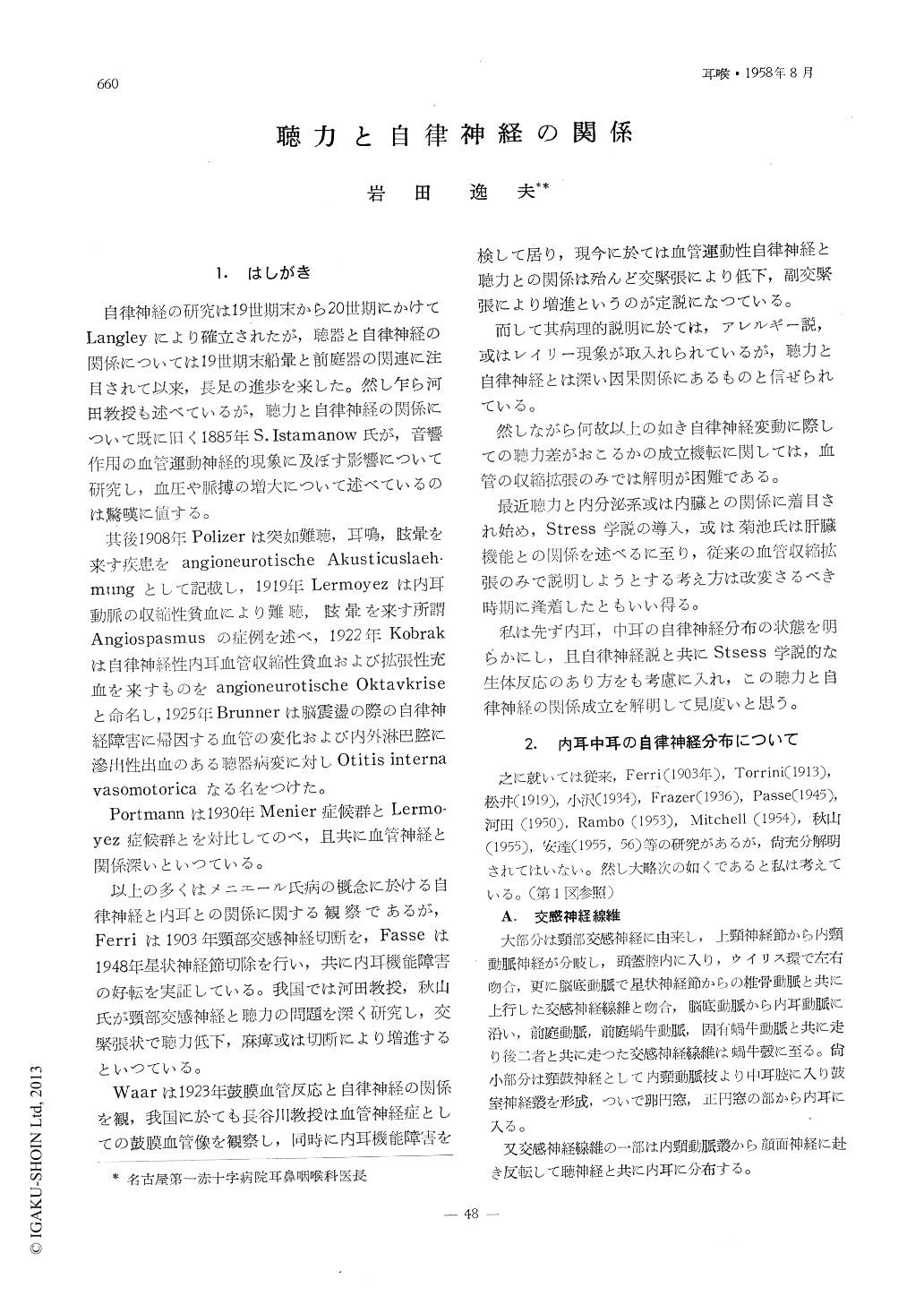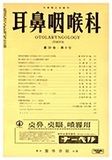- 有料閲覧
- 文献概要
- 1ページ目
1.はしがき
自律神経の研究は19世期末から20世期にかけてLangleyにより確立されたが,聴器と自律神経の関係については19世期末船暈と前庭器の関連に注目されて以来,長足の進歩を来した。然し乍ら河田教授も述べているが,聴力と自律神経の関係について既に旧く1885年S. Istamanow氏が,音響作用の血管運動神経的現象に及ぼす影響について研究し,血圧や脈搏の増大について述べているのは驚嘆に値する。
其後1908年Polizerは突如難聴,耳鳴,眩暈を来す疾憩をangioneurotische Akusticuslaehmungとして記載し,1919年Lermoyezは内耳動脈の収縮性貧血により難聴,眩暈を来す所謂Angiospasmusの症例を述べ,1922年Kobrakは自律神経性内耳血管収縮性貧血および拡張性充血を来すものをangioneurotische Oktavkriseと命名し,1925年Brunnerは脳震盪の際の自律神経障害に帰因する血管の変化および内外淋巴腔に滲出性出血のある聴器病変に対しOtitis interna vasomotoricaなる名をつけた。
The studies on the relation of hearing acuity and that of autonomic nervous system had been opened by Istamanow when, in 1885, he reported the infuluence that sound effect has upon the phenomenon of vasomotor system. Since then numerous works have been done in this subject and today it is well known that, with stimulation of the symyathetic the heariog acuity will be decreased and with stimulation of the parasympathetic it will be increased. However, it appears that the explanation of such a phenomenon by manifestation of vascular contaction or dilatation alone is not quite conplete unles Reilly's theory of stress is also added in the picure. Furthermore, recentry Kikuchi is of opinion tat changes that may occur in the liver function center, (sympathetic stimulation bringing lowering ofliver function anc parasympathetic stimulation causing increased function), which is anrtomically closely situated to the brain canter having control over the autonomic nervous system should also be includedin the overall picture. Coinciding with similar line of thought, the author believes that, for full explanation of the relation between hearing acuity and functioniog of autonomic nervous system changes that may occur in the pituitary body, liver and suprarenal glands should be taken into account as well as that of the nervous function of the vasomotor system.

Copyright © 1958, Igaku-Shoin Ltd. All rights reserved.


